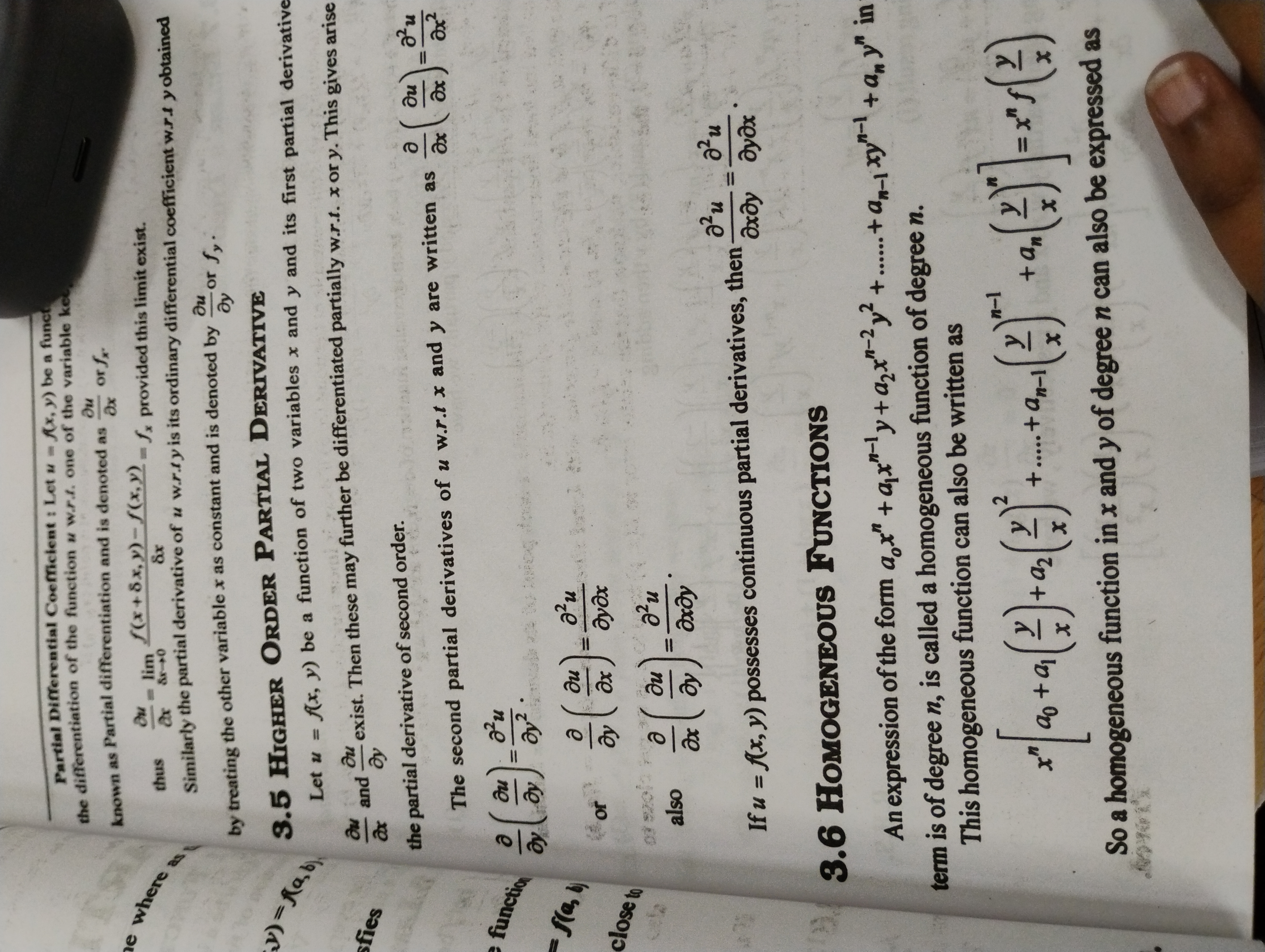What are higher order partial derivatives and homogeneous functions?

Understand the Problem
The question is exploring the concepts of higher order partial derivatives and homogeneous functions in the context of multivariable calculus, specifically how to calculate them and their notations.
Answer
Higher order partial derivatives are derivatives of a degree more than one. Homogeneous functions of degree n satisfy f(tx, ty) = t^n f(x, y).
Higher order partial derivatives of a function are obtained by differentiating its first partial derivatives. Homogeneous functions of degree n satisfy the property f(tx, ty) = t^n f(x, y).
Answer for screen readers
Higher order partial derivatives of a function are obtained by differentiating its first partial derivatives. Homogeneous functions of degree n satisfy the property f(tx, ty) = t^n f(x, y).
More Information
Higher order derivatives are necessary to understand changes in a function's curvature and other higher-level characteristics. Homogeneous functions are significant in subjects like economics and physics, where scaling properties are commonly analyzed.
Tips
A common mistake is not correctly applying the chain rule during differentiation to find higher-order partial derivatives. For homogeneous functions, it's crucial to properly account for the degree n when applying definitions or transformations.
Sources
- Calculus III - Higher Order Partial Derivatives - tutorial.math.lamar.edu
- Higher Order Partial Derivatives | Overview, Variables & Examples - study.com
- Homogeneous function - Wikipedia - en.wikipedia.org
AI-generated content may contain errors. Please verify critical information